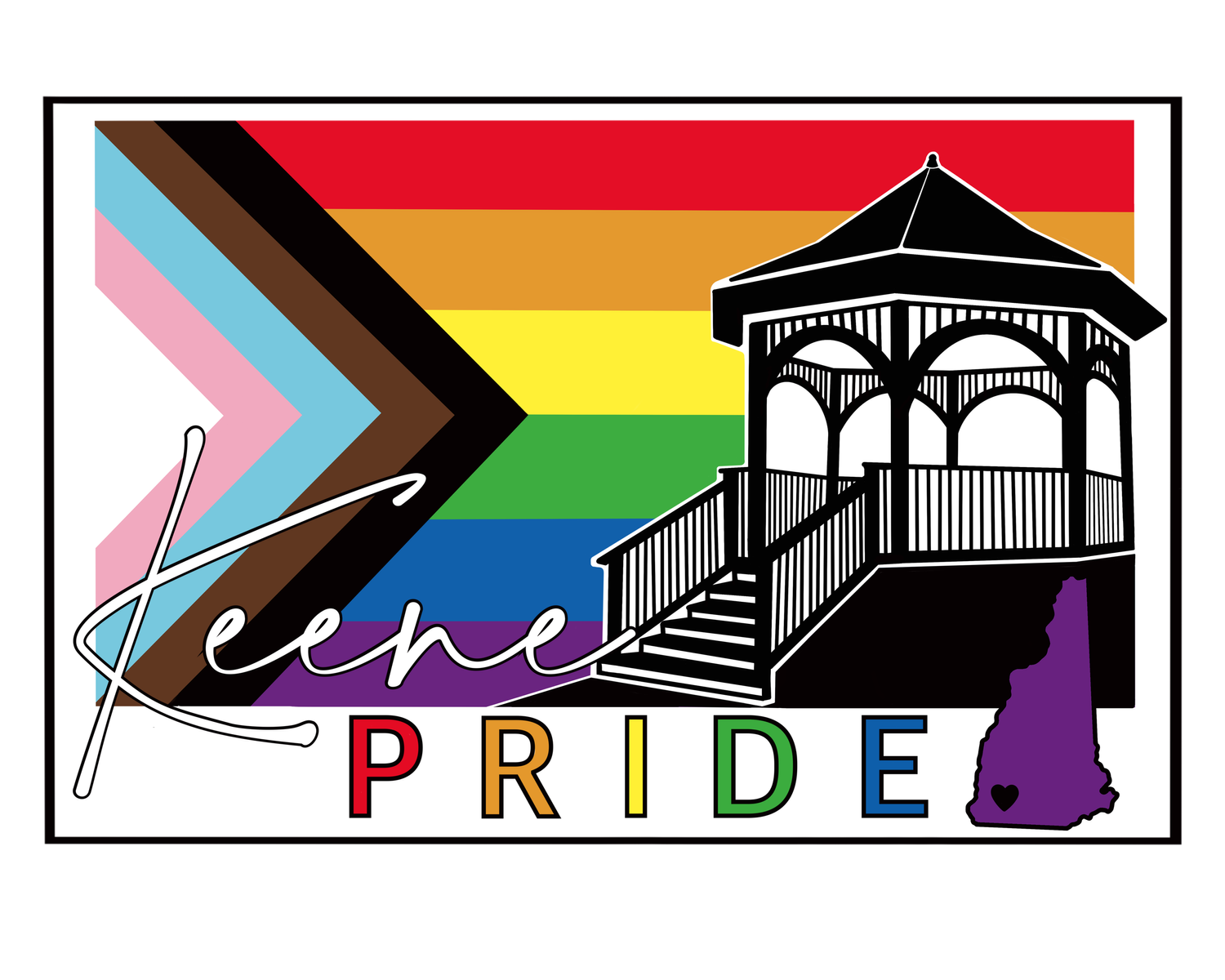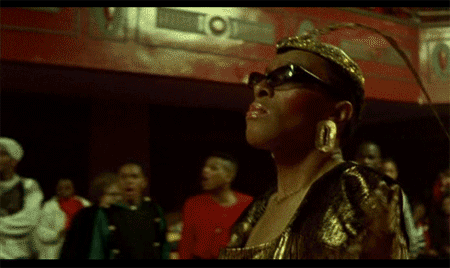You may have seen Keene Pride merch with the term YASS KEENE! colorfully splashed it. This term is derived from Yas Queen, a term that has deep roots in the New York Vogue Ball scene in the 1980s and 1990s. It was used as a rallying call and was said as an exaltation or an expression of excitement. This page is dedicated to showing the context of this term and its historical significance in the LGBTQ+ and BIPOC communities.
In the colorful tapestry of modern slang, few phrases carry the same weight of empowerment and celebration as "Yas Queen." This exclamation, accompanied by a spirited snap, has become a rallying cry for confidence, support, and fierce affirmation within various communities. Yet, the roots of "Yas Queen" delve deep into the vibrant underground of the vogue ball scene, where Black & POC drag queens, queer individuals, and trans people pioneered a culture of self-expression and resilience.
Originating in the heart of New York City's LGBTQ+ community in the 1980s and 1990s, the vogue ball scene provided a sanctuary for those often marginalized by society. In this subculture, individuals found freedom to embrace their identities through extravagant performances, elaborate fashion, and daring dance moves. It was within this electrifying atmosphere that "Yas Queen" emerged as more than just a phrase—it became a beacon of empowerment and affirmation.
The term "Yas" itself is believed to stem from African American Vernacular English (AAVE), where it served as an emphatic variation of "yes," brimming with enthusiasm and sass. As it found its way into the lexicon of the vogue ball scene, "Yas" evolved into "Yas Queen," with "queen" holding profound cultural significance. Within this community, "queen" is not merely a gendered title but a symbol of strength, resilience, and unapologetic authenticity.
Black drag queens, queer individuals, and trans people played pivotal roles in shaping the vogue ball scene, infusing it with their creativity, innovation, and unyielding spirit. Icons like Pepper LaBeija, Dorian Corey, and Octavia St. Laurent became legends within the community, inspiring generations with their artistry and fearlessness. These pioneers not only popularized "Yas Queen" but embodied its essence, serving as living embodiments of confidence, charisma, and fierceness.
As the vogue ball scene gained visibility and influence, "Yas Queen" began to transcend its underground origins, making its way into mainstream culture. Its ascent was further propelled by the hit television series "Pose," which brought the vibrant world of ballroom culture to a global audience. Set in the 1980s and 1990s, "Pose" pays homage to the pioneers of the vogue ball scene, highlighting their struggles, triumphs, and the enduring legacy of empowerment they left behind.
Today, "Yas Queen" serves as a testament to the resilience and creativity of the LGBTQ+ community, honoring the trailblazers who paved the way for its widespread embrace. It is more than just a phrase—it is a declaration of solidarity, affirmation, and celebration of individuality. As we continue to champion inclusivity and acceptance, let us never forget the origins of "Yas Queen" and the courageous souls who dared to defy the status quo and reign supreme as queens of their own destiny.
Octavia St. Laurent (1964-2009)
Octavia was an American model and AIDS educator who was active in New York City’s Black and Latino ballroom community and Harlem's luxurious balls. She came to public attention after being featured in the 1990 documentary Paris is Burning.
St. Laurent was born in Brooklyn, New York, on March 16, 1964. In their youth, St. Laurent identified as a trans woman, but had a very different view on their gender, and when asked if they were a man, they would proudly claim "ABSOLUTELY", which often stunned many in the trans community. They were born producing more estrogen than most people assigned male at birth.
St. Laurent was diagnosed as positive, and would later serve as an educator to spread awareness about the disease. During their appearance in Wolfgang Busch's LGBT documentary How Do I Look, St. Laurent further discussed their drug use and sex work, and fight with AIDS.
In 2008, St. Laurent was diagnosed with cancer. They moved in with their sister while receiving treatment and started a one-person show at Spirits gay bar in Syracuse, NY, which they described as a quiet place for respite. St. Laurent gave a final interview by phone in March 2009and died after a long battle with cancer on May 17, 2009, in Syracuse, New York, aged 45. St. Laurent is buried in a cemetery in Queens, NY.
Pepper Labeija (1948-2003)
Born in The Bronx in 1948, Pepper Labeija first arrived on New York city's gay ballroom scene in the late-1960s and eventually became head of the House of LaBeija in 1981.
While not identifying as a woman, Labeija had breast implants and preferred the feminine pronoun she. Labeija remained the head of the house (known as "the Mother") until her death in 2003. As the head of the House, Labeija spoke openly about the importance of providing support and guidance to young gay men arriving on the scene after being alienated from their families.
Labeija was known for Egyptian-inspired runway performances and won approximately 250 ballroom trophies over the course of her career. Outside of performing, Labeija earned a living producing drag balls and teaching modeling.
Dorian Corey (1937-1993)
Dorian Corey was a drag queen and fashion designer and played a pivotal role in the Vogue Ball scene in New York City. the 1960s, Corey toured as a snake dancer in the Pearl Box Revue, a cabaret drag act. She was one of four performers who appeared on the 1972 Pearl Box Revue LP Call Me MISSter.
Corey founded the House of Corey, which holds over 50 grand prizes from vogue balls. She was a mother to Angie Xtravaganza who is featured in the film Paris Is Burning, (1990).
Corey also ran and designed a clothing label called Corey Design. At one point, Corey's act involved her wearing a 30 ft × 40 ft feather cape. Once she shed her costume down to a sequined body stocking, two attendants raised the cape up on poles to produce a feathered tent that covered half the audience.





